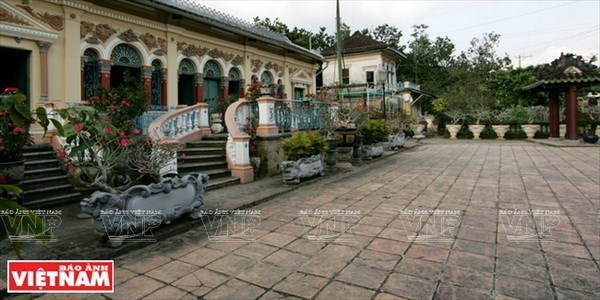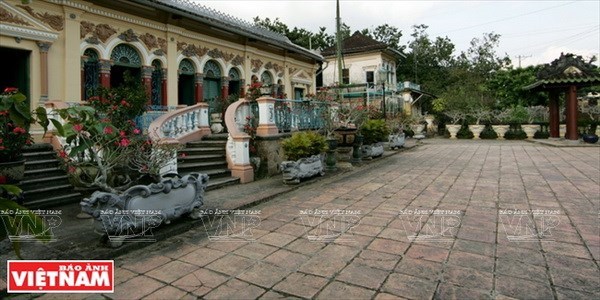



The ancient house of Binh Thuy, built in 1870 in Binh Thuy
district, is among tourist destinations in Can Tho city (Photo: VNA)
The municipal Department of Labour, Invalids and Social Affairs had a working
session with Life Project 4 Youth (LP4Y), a Philippine organisation, on April
10 to discuss the Mekong green tourism village project.
Head of the project Lisa Bonnion said it is an environmentally friendly tourism
model that targets areas with eco-tourism and community-based tourism
potential, aiming to appropriately make use of natural landscapes for tourism.
This project will create jobs for locals while still protecting the
environment.
Can Tho, as the heart of the Mekong Delta, is the first locality in the
southwestern region to carry out this model, and the LP4Y hopes success in the
city will attract other localities’ attention so as to expand the model to the
whole region, she noted.
The project will focus on environmental quality, cultural and social aspects,
economic development and management efficiency. In the short term, it will help
build Can Tho into a tourism city with environment being its top priority,
develop ecotourism, conserve cultural identities and natural landscapes,
develop human resources for the industry, and support traditional craft
villages.
In terms of infrastructure, clean water supply and wastewater treatment systems
will be built for green tourism villages, the transport network expanded,
natural landscapes upgraded, and local customs, history and climate taken into
account.
This project will also provide free vocational training on tourism services for
low-income and disadvantaged youths aged between 17 and 24. Trainees will be
provided with jobs in green tourism villages.
Director of the municipal department Tran Thi Xuan Mai said although Can Tho’s
tourism is thriving, it is facing great pressure in terms of environmental
protection. Therefore, developing the green tourism village model is necessary.
The department will work with relevant agencies to devise a plan to carry out
the project soon, she added.
Source: VNA